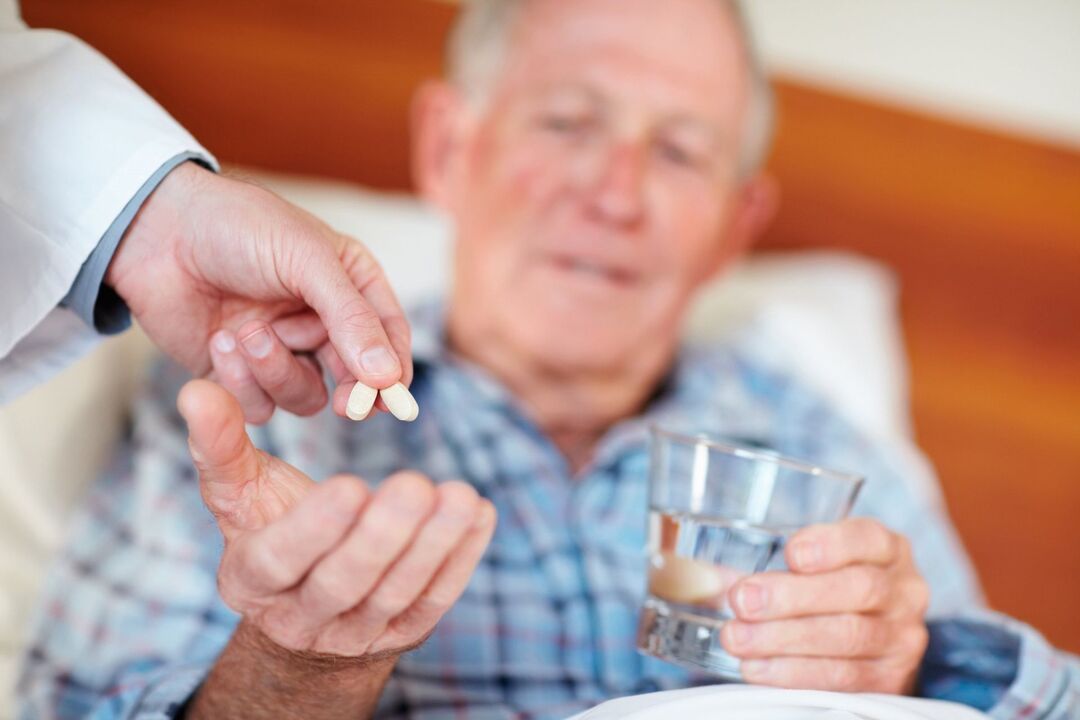
Prostate adenoma and prostatitis are two diseases that cause real panic among men.These "male" pathologies are not absolutely similar, although in both cases the prostate is affected, and it is necessary to take medications for prostatitis and prostate adenoma, use other treatments, and perform surgery for complications.However, when talking about adenomas, they are referring to benign tumors, while prostatitis is an inflammatory process that occurs in the prostate.
Both diseases are mostly diagnosed in men in their 45s or 50s, and many men mistakenly believe that adenomas are a complication of prostatitis.This misunderstanding is often based on the similarity of symptoms—both conditions are associated with difficulty urinating and pain.There are some similarities but also fundamental differences in the treatments.
Disease treatment principles
Let's consider the main stages of treatment of prostate adenoma and prostatitis.For both conditions, treatment should be comprehensive to be more effective.Acute prostatitis in men can be cured by antibacterial treatment with drugs with broad spectrum action, anti-inflammatory drugs and desensitizing drugs.If an abscess is suspected, an autopsy of the source of the purulent inflammatory process is required.
Drug therapy aims to stabilize the patient's condition by lowering the body temperature, stopping the inflammatory process and normalizing the systemic condition.Doctors use rectal and instrumental examinations and laboratory tests to confirm whether the abscess needs to be removed.After the autopsy, the hospital will place a drain to drain the pus.After the prostate is drained, the inflammatory process stops, the drainage is removed, and the wound heals in about a week.
With changes in lifestyle and eating habits, men with chronic prostatitis require longer treatment times.The main goal of treatment is to eliminate congestion.For this purpose:

- Antibacterial medication is taken, which takes two to eight weeks.
- Medications to improve blood circulation.
- Prescription nonsteroidal anti-inflammatory drugs.
- Use physical therapy methods - magnet therapy and laser therapy.Ultrasound, reflexology and leech therapy are also recommended.
- Gland massage.
Modern treatment techniques guarantee a fairly stable remission, the duration of which can last for several years, and, in the case of successful combination of the situation, a complete cure.
When prostate adenomas are detected in the initial stages of development, the most effective treatment is medication.Similar to the treatment of male prostatitis, physical therapy, dietary therapy, and lifestyle adjustments are recommended.The purpose of taking medications is to slow down the growth and reduce the size of the glands and reduce the severity of urinary diseases, for this they use:
- Antibacterial agents.
- Medications that correct hormonal metabolism can make the glands smaller.
- To stabilize the urinary process, it is recommended to use drugs that improve the tone of the prostate and urethra.
- Capsules of vegetable origin, their use becomes difficult since their effects have not been fully studied.
- Photodynamic therapy was prescribed.
- Perform ozone therapy and exercise therapy
In both cases, traditional recipes can be used as additional remedies after consulting a doctor.Medications used to treat prostatitis and adenomas will have better results if victims refuse addiction.
Antibiotic use leads to prostatitis and adenoma formation
Let’s take a look at what drugs are needed for prostatitis and prostate adenoma, starting with antibacterial drugs.It is thought to be common for antibiotic drugs to treat prostate adenomas to be used only when the disease is related to a bacterial infection.Antibacterial drugs for the treatment of prostatitis are one of the key points of treatment.In both cases, the following can be specified:
- Penicillins.They are produced in the form of tablets, injections and oral suspensions.
- Tetracyclines.
- Cephalosporins.Mainly used to treat prostatitis.They are used when inflammation is caused by Gram-positive or Gram-negative bacterial, anaerobic pathogens.Substances should be administered parenterally.
- Fluoroquinolones.They are prescribed in the presence of Ureaplasma, Chlamydia, Gardnerella, Staphylococcus or Streptococcus pathogens, Escherichia coli or Mycoplasma.
- Macrolides group.The advantage of this drug is that it has low toxicity and can accumulate in the prostate.The drug is produced in tablet or solution form.
- Aminoglycosides.This is a good option if the cause of the inflammation has not been identified or is multiple.
Treating related diseases with antibiotics can eliminate many negative symptoms, but comes with side effects.In most cases this is a disruption of the digestive system and the formation of dysbiosis.
Inhibitor and adrenergic blocker therapy
Among drugs used to treat prostatitis and prostate adenoma, α1-Adrenergic blockers and inhibitors.The former has a relaxing effect on the muscle tissue of the prostate, thus quickly eliminating muscle spasms and normalizing the urinary process, which is disturbed in 85% of cases.In addition, such drugs can cause a strong decrease in blood pressure, which should be taken into account when prescribing.
For prostate adenomas, medications include 5-alpha reductase inhibitors.These drugs are most commonly used because they effectively prevent the development of lesions, help reduce the size of the prostate and help normalize the urinary process.Inhibitors are very effective because after one course of treatment, more than 50% of victims do not require surgical intervention.The effect of combined treatment will be better and the effect is much more stable than single treatment.
Medications to Fight Prostate Pain and Inflammation
Treatment of the pathology under consideration includes pain relief and elimination of the inflammatory process.The pain is especially unbearable during exacerbations of the disease; antispasmodics can help relieve it.They help relax the smooth muscles of the prostate and help improve blood circulation.
An inflammatory process in the prostate is characteristic of prostatitis.If treatment is ignored, the condition will worsen with pain, erectile dysfunction, and urinary retention due to pressure on the catheter.Often, when advising on how to treat prostatitis, doctors prescribe medications that relieve inflammation, which in many cases can eliminate negative symptoms.
An inexpensive and effective treatment for prostatitis is also available: anti-inflammatory nonsteroidal drugs with antipyretic properties.Any medication should be taken strictly as prescribed by a physician and under his direct supervision.
Herbal preparations for treatment
Drugs with a clear positive effect on adenomas are herbal medicines, the most notable of which is the extract from the Permixon palm tree.
You can use:
- Drugs that have a positive effect on the metabolism of the system are also universal strengthening substances.Contains sandalwood, sage, ginseng, ginger, clove, calamus and other ingredients.
- A dietary supplement drug containing more than 40 ingredients, most of which are herbal.
- A drug used as an antiseptic, analgesic, and immunomodulator with antipyretic and anti-inflammatory properties.This product contains burdock root, slippery elm bark, ash bark, juniper berries and bearberry leaf.
This is not a complete review of the medications available to treat prostatitis and prostate adenomas.However, they should be prescribed exclusively by a doctor so that unpleasant and dangerous consequences can be avoided.













